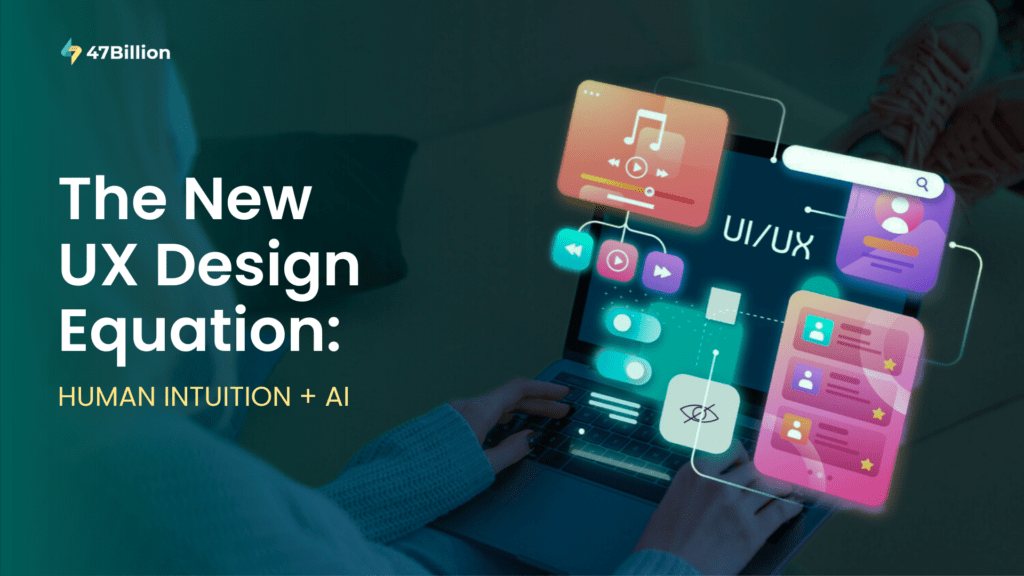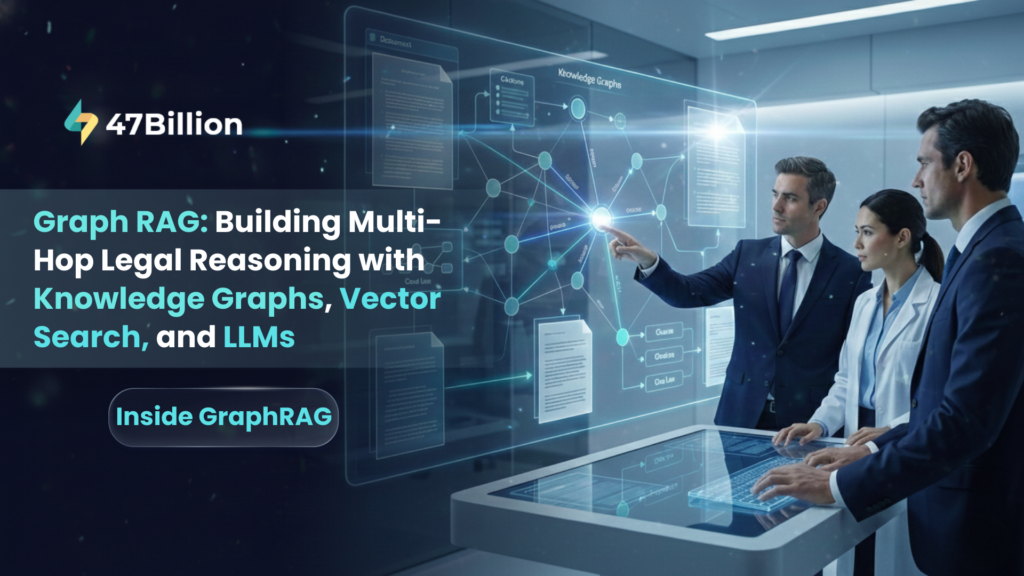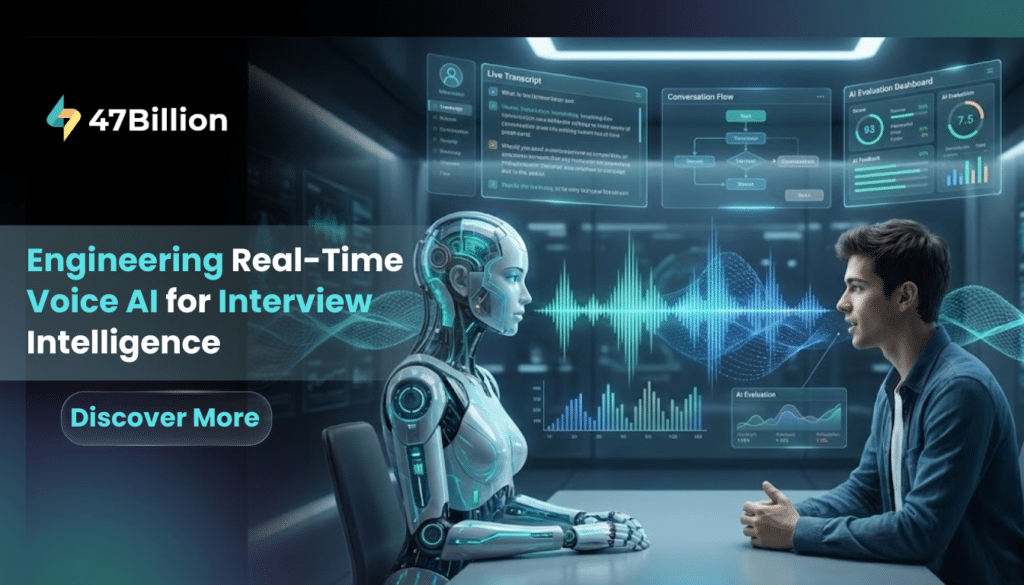Table of Contents –
- Introduction
- Impact of AI on UX Design Industry
- 6 ways UX designers can use AI to their advantage
- Why is this collaboration essential?
- Conclusion
“People will increasingly realize the importance of interacting with each other and the natural world. They program Artificial Intelligence (AI) to support such goals, supporting the ongoing emergence of the “slow movement. “For example, grocery shopping and mundane chores will be allocated to AI (smart appliances), freeing time to prepare meals in keeping with the slow food movement. Concern for the environment will likewise encourage the growth of the slow goods/slow fashion movement. The ability to recycle, reduce, and reuse will be enhanced using in-home 3D printers, giving rise to a new type of ‘craft’ supported by AI. AI will support the ‘cradle-to-grave’ movement by making it easier for people to trace the manufacturing process from inception to final product.”
–The futurist and game designer Dana Klisanin predicted
The rise of Artificial Intelligence (AI) integration has been evident through AI-powered tools, which have extended to diverse areas, including marketing, sales, operations, and more. As per McKinsey’s report, the adoption of AI has experienced remarkable growth, more than doubling since 2017. The report highlights that the most popular application of AI is in service operation optimization, followed closely by product and service development, including design. These findings underscore AI’s widespread adoption and growing significance in organizations across various sectors.
In the digital landscape, the combination of emotions-driven design and artificial intelligence is creating new avenues for user experiences that are both personalized and emotionally resonant.
Impact of AI on UX Design Industry
AI is helping UX designers to automate mundane tasks, such as categorizing user actions and flow, predicting user behaviors, and extracting relevant insights from large volumes of user data – which usually takes more time to finetune the final product.
Instead of adopting hit and trial approach or predefined rules, AI tools enable UX designers to develop predictive models based on user data – and automatically apply them to their designs. This level of personalization leads to more sophisticated and user-centric digital products.
So, what is the role of UX designers now?
Looking at all the applications of AI in UX Design, it is a powerful addition to the UX designer’s toolkit, but it cannot simply replace human empathy. At its core, UX design is always about developing a deep understanding of human needs and creating functional products that reflect day-to-day human experiences and interactions.
A big part of UX design is workshops and discussions between stakeholders across the business that AI cannot replace.
Therefore, AI is here to make UX designers’ lives easier. This brings us to the next section, where we will know.
6 ways UX designers can use AI to their advantage –

Analyzing User Data –
With tools like Research AI, UX designers no longer need to review data manually. They can now quickly gather and analyze large volumes of user data. Using algorithms, AI helps in predicitng user behavior, tracking page visitors and engagement, and detecting patterns in user data. UX designers can quickly gain insights into user behavior and make decisions.
Creating User Personas –
AI can help designers quickly develop user personas based on user behavior insights. AI tools like Smartone can perform sentiment analysis of users’ discussions on various social media channels and forums – and analyze patterns. AI then provides Templates/pro personas for the design process based on the patterns which can be further enhanced based on research and interview findings.
UX Writing and Product Writing –
With several writing tools, such as Writer and Copy AI, AI quickly bridges the gap between design and content. Instead of populating the content with dummy placeholder text, designers can generate meaningful, audience-specific content optimized for search engines and users.
Automating Design Workflows –
Tools like Brainpool can help streamline design workflows. AI-driven automation creates repetitive features, validates data inputs, and assembles design elements through pattern recognition. AI algorithms can also quickly help adapt to new surroundings, allowing designers to generate concepts faster and build intelligent workflows with real-time feedback loops.
Adding UI and Branding Elements –
AI tools have a wide range of features that help designers to elevate their designs. For example, tools like Adobe Sensei provide access to a collection of icons, logos, typefaces, and color palettes that can be utilized and modified to incorporate the branding strategy.
User Testing and Prototyping –
Algorithms like Visualeyes assist in user testing processes in several ways, including identifying potential user patterns, providing simulations of user actions while accounting for various scenarios, and automating traditionally time-consuming processes like gathering feedback.
With an understanding of user behavior and predictions around UX, designers can iterate them on their prototypes for successful product launches.
This intersection of AI and UX design has the potential to understand, predict, and respond to user needs and emotions in an intuitive and empathetic manner. UX designers can personalize interactions and predict user behavior to craft emotionally engaging experiences.
But here, you need to understand that when adopting this new technology, you must also fact-check the results you get. AI can be suitable for quantitive data, but qualitative research like user interviews, focus groups, and card sorting should always be conducted by humans and with humans.
Comparing AI data analysis and your user research is an excellent way to assess the accuracy of the AI tools you use and provides complete insights into your users.
Why is this collaboration essential?

Once, Don Norman said, “Pleasure and emotion are critical components of a quality experience.”
As technology integrates with our lives, the emotional aspect of user experiences has become more crucial.
Here are significant reasons why this collaboration works so well –
Personalized User Experience –
By understanding users’ emotions, brands can create highly personalized interactions, enhancing customer experiences and fostering more profound connections. AI tools can help designers incorporate insights and create adaptive interfaces that respond to users’ emotional states, resulting in a more personalized and engaging user experience. Also, they can enhance market research as it can contribute to accurate user segmentation by considering user profiles alongside traditional demographic and behavioral data.
Experience at every customer touchpoint –
By leveraging AI-based tools, companies can create more engaging, personalized, and emotionally intelligent interactions.
Product interfaces are enabled by adjusting the layout, color schemes, and content based on users’ emotional states, thus achieving personalized experiences.
Predictive User Interaction –
As designers, the idea of personalization is to customize experiences to fit each user’s unique preferences. But predictive UX takes everyone beyond this thought. It is all about combining current user behavior with the foresight to anticipate what users want to see next. Here, we need to analyze patterns in user data and behavior. Predictive UX is all about being proactive, not waiting for users to take action but actively suggesting further activities or information that could be relevant to them. For example, a travel app might predict when users will likely book a trip and suggest personalized travel options or discounts before they start searching.
Conclusion
At the heart of this transformation lies the potential for AI and Machine Learning (ML) to comprehend, predict, and respond to human emotions in a truly intuitive and empathetic manner. This unique ability helps designers craft experiences finely tuned to individual needs and emotional states.
The collaboration between AI and emotions-driven design has become indispensable as technology becomes increasingly ingrained in our lives, highlighting emotions’ pivotal role in creating quality experiences.
The significance of this collaboration is multifaceted. By harnessing user emotions, brands can tailor interactions that resonate on a personal level, deepening connections with users.
AI cannot exhibit a whole cloud of human emotions, cultural variations, and contextual understanding, essential for creating exceptional experiences. Human empathy is still required in this case as they can understand users’ frustrations, joys, and aspirations, leading to designs that address their unspoken needs.
AI is an add-on to the designer’s stack to augment their emotionally intelligent design processes. It can be used to process and analyze data at scale to gain competitive insights and identify patterns. However, you can get human elements in place by integrating both through informed decision-making.







